Discover 20 hidden attractions, cool sights, and unusual things to do in A Coruña (Spain). Don't miss out on these must-see attractions: Tower of Hercules, National Museum of Science and Technology, and Aquarium Finisterrae. Also, be sure to include Riazor Beach in your itinerary.
Below, you can find the list of the most amazing places you should visit in A Coruña (Galicia).
Table of Contents
Tower of Hercules
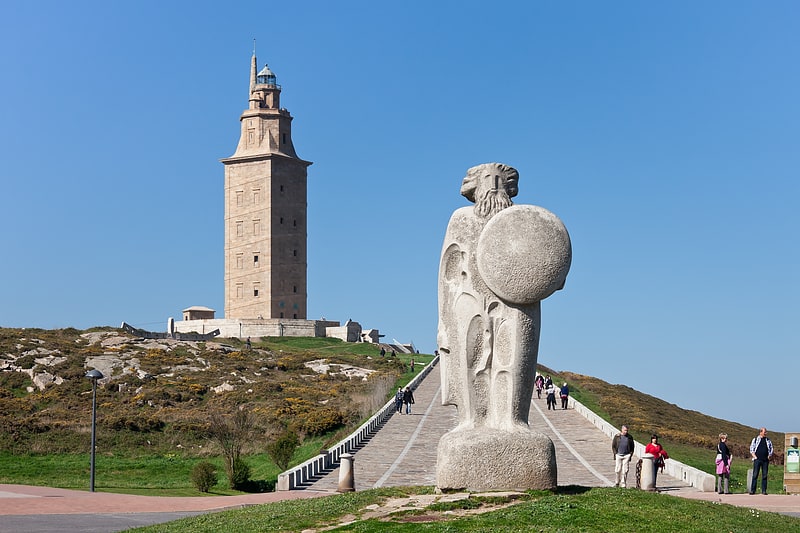
Also known as: Torre de Hércules
Oldest Roman lighthouse still in use. The Tower of Hercules is the oldest extant lighthouse known. It has an ancient Roman origin on a peninsula about 2.4 km from the centre of A Coruña, Galicia, in north-western Spain. Until the 20th century, it was known as the Farum Brigantium. The Latin word farum is derived from the Greek Φάρος, Pharos, for the Lighthouse of Alexandria. The structure stands 55 metres tall and overlooks the North Atlantic coast of Spain. It was built in the 1st century and competently renovated in 1791.
There is a sculpture garden featuring works by Pablo Serrano and Francisco Leiro. The Tower of Hercules is a National Monument of Spain, and has been a UNESCO World Heritage Site since 27 June 2009. It is the second-tallest lighthouse in Spain, after the Faro de Chipiona.[1]
Address: Av. Navarra, s/n, 15002 A Coruña
National Museum of Science and Technology
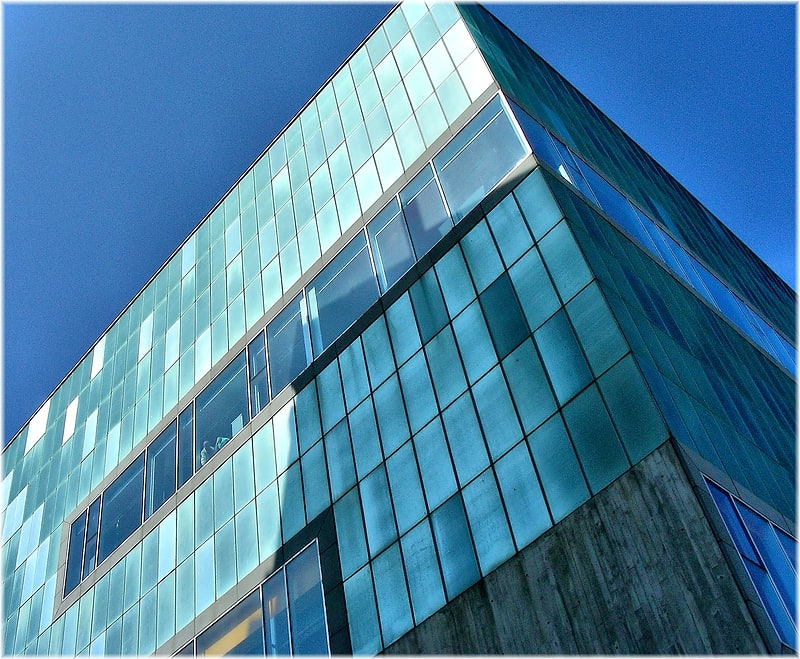
The National Museum of Science and Technology is a Spanish technology museum dedicated to technology promotion and preservation. It owns a collection of more than 17,000 scientific instruments, technological devices, vehicles, machines and industrial tools from the 16th century until nowadays.
The museum was established on June 30, 1980 and its first location was opened on 1997 in the old Delicias railway station building in Madrid sharing premises with the Railway Museum. The museum current main exhibition hall is in La Coruña, opened on May 4, 2012. with a second exhibition hall in Alcobendas (Madrid), opened on December 12, 2014.
Among the pieces in display at La Coruña are the prototype of the "Mechanical Encyclopedia", the 1949 mechanical precursor to the electronic book, by Spanish inventor Ángela Ruiz Robles, the Fresnel lens used between 1857 and 1904 at the Tower of Hercules lighthouse, the first computer arriving in Spain, an IBM 650 computer bought by RENFE in 1959 and the front section of the "Lope de Vega", an Iberia Boeing 747 in service between 1981 and 2003, airplane that brought the Guernica to Spain on September 1981.[2]
Address: Plaza del Museo Nacional, 1, 15011 A Coruña
Aquarium Finisterrae
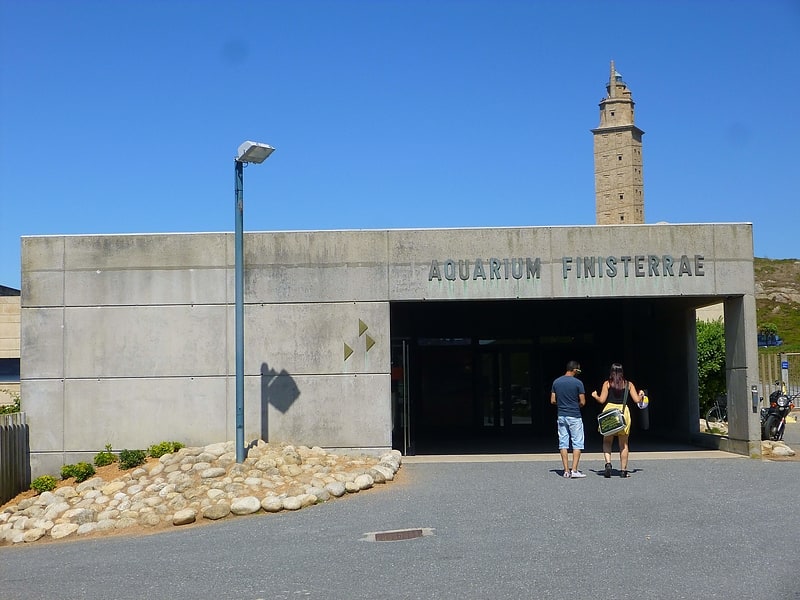
Aquarium in Spain. Aquarium Finisterrae is an aquarium located in A Coruña, Galicia, Spain. It is an interactive centre of the sciences of marine biology, oceanography. It advocates wildlife preservation, particularly the sea ecosystem and sea life.
Founded by the City of A Coruña, it was inaugurated on June 5, 1999. It is directed by Ramón Núñez Centella. Its technical director is Francisco Franco del Amo.
It is located on the coast of A Coruña, in the Maritime Pass, between the Domus (museum) and the Tower of Hercules. Its exterior pools are connected to the Atlantic Ocean.[3]
Address: Paseo Marítimo Alcalde Francisco Vázquez, 34, 15002 A Coruña
Riazor Beach
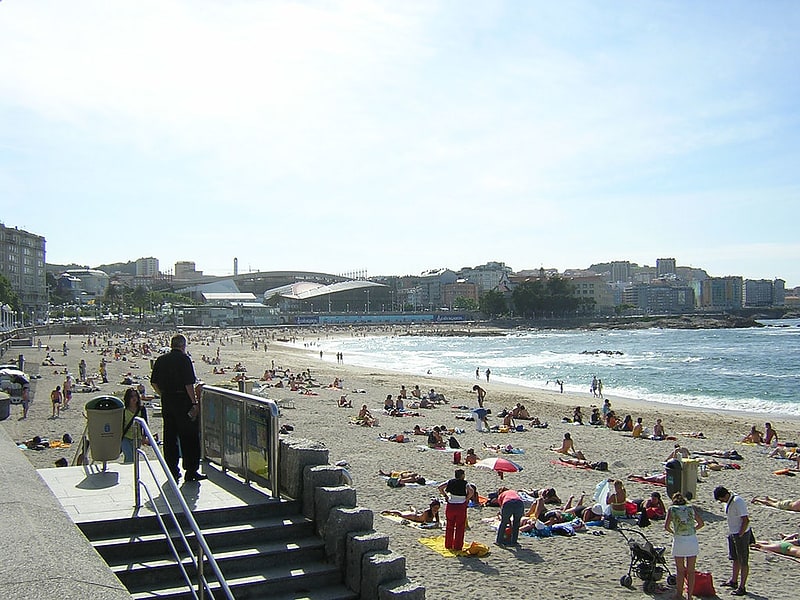
Riazor beach is an urban beach in the city of La Coruña, located in the Ensenada del Orzán. It has the Blue Flag, a distinction awarded to beaches with the best environmental conditions and facilities. Its continuation to the northeast is the Orzán beach. It is in front of the hotel Riazor.
Igrexa de Santiago
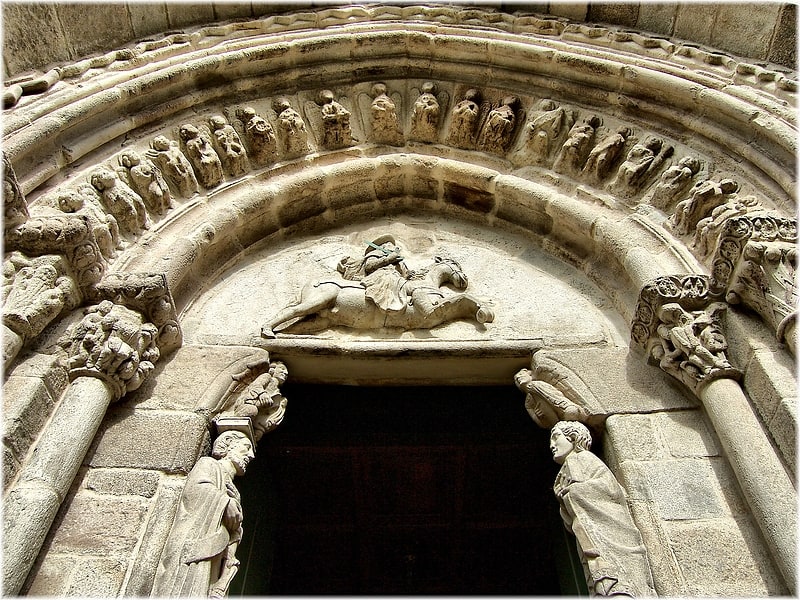
Also known as: Iglesia de Santiago
Catholic church in A Coruña, Spain. Igrexa de Santiago is a church in A Coruña, Province of A Coruña, Galicia, Spain. Founded in the 12th century, it became a historic monument on 18 August 1972.[4]
Address: Rúa do Parrote, 1, 15001 A Coruña
Praia das Lapas

Las Lapas beach is a small urban beach in the city of La Coruña, located at the foot of the Tower of Hercules. It has the distinction of blue flag.
It has showers, toilets, parking and, during the summer, security service, first aid and ISO 14001 environmental management.
The beach can be reached by bus lines 3A and 5.
Praia de San Amaro
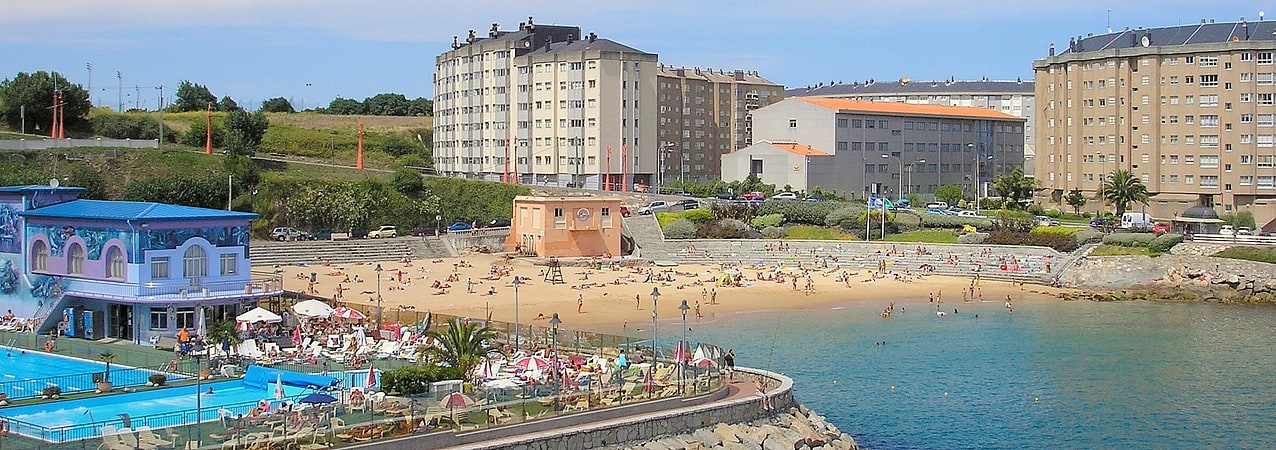
Beach
Address: Adormideras s/n, 15002 La Coruña
Orzan Beach
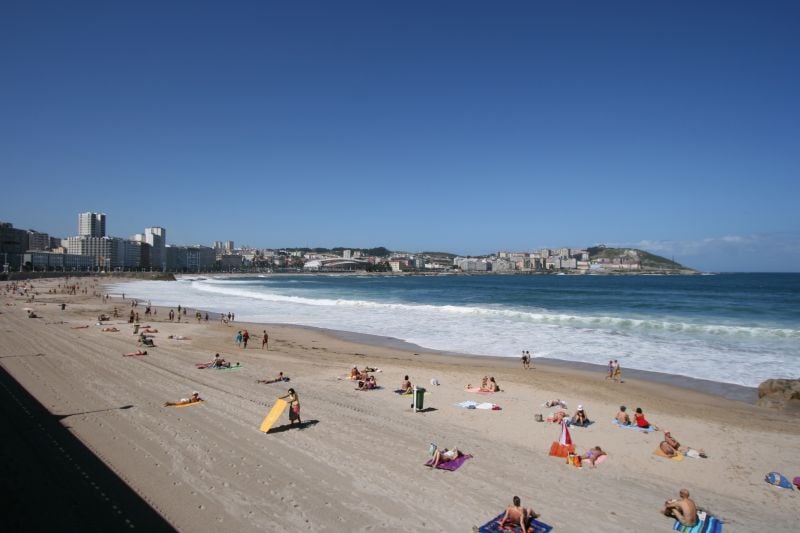
Orzán beach is an urban beach in the city of La Coruña, located in the Ensenada del Orzán. It has the Blue Flag, a distinction awarded to beaches with the best environmental conditions and facilities. Its continuation to the southwest is the beach of Riazor.
Address: Av. Pedro Barrié de la Maza, 15001 La Coruña
Praia do Matadoiro
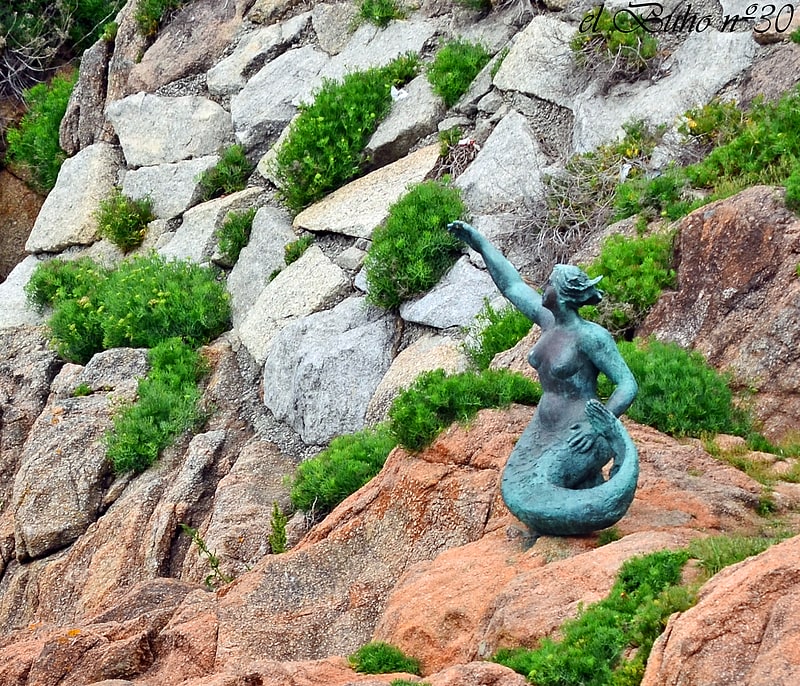
Matadero beach, whose historical name is Berbiriana beach, is a small urban beach in the city of La Coruña, located north of Orzán beach. Like the latter, it has the blue flag distinction.
It has toilets, showers, parking, security service, lifeguard and first aid. Access with animals is not allowed.
Surfing, bodyboarding and longboarding are common on the beach thanks to its weather conditions, low tide and winds from the southwest or northeast. Every year a longboard championship is held, the Matadero Longboard Festival, with national and international participation.
Castro de Elviña

Museum in Spain. Castro of Elviña is an Iron Age hill fort located south of the city of A Coruña, Galicia, Spain. It was declared a historic monument in 1962.[5]
Address: Castro de Elvina, A Coruña
Igrexa de San Xurxo
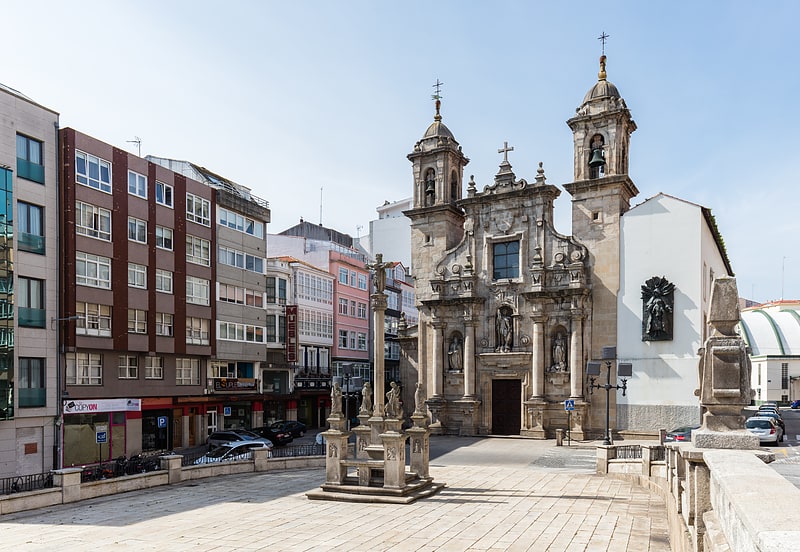
Also known as: Iglesia de San Jorge
Parish in A Coruña, Spain. Igrexa de San Xurxo is a church in A Coruña, Province of A Coruña, Galicia, Spain. It is built in the baroque style.
Here first same-sex marriage in Spain took place between Elisa and Marcela in 1901, which is the basis for the movie of the same name[6]
Address: Plaza del Marqués de San Martín, 4, A Coruña
Museo Emilia Pardo Bazán
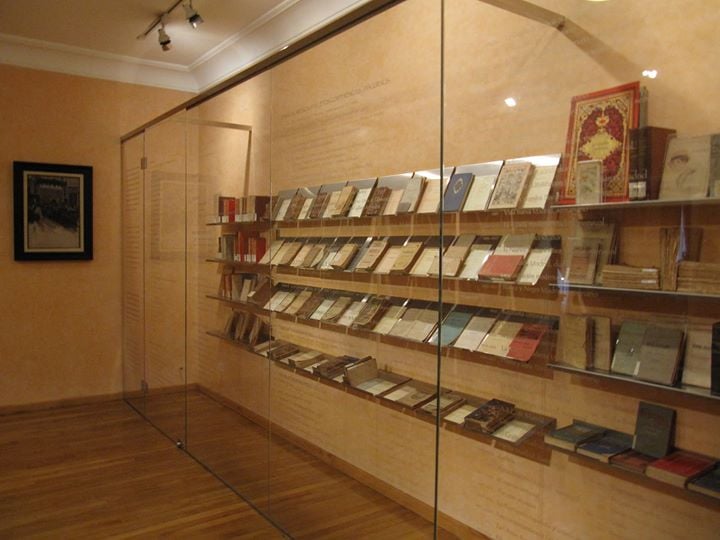
Museum, Specialty museum
Address: Rúa Tabernas, 11, 15001 A Coruña
Carral
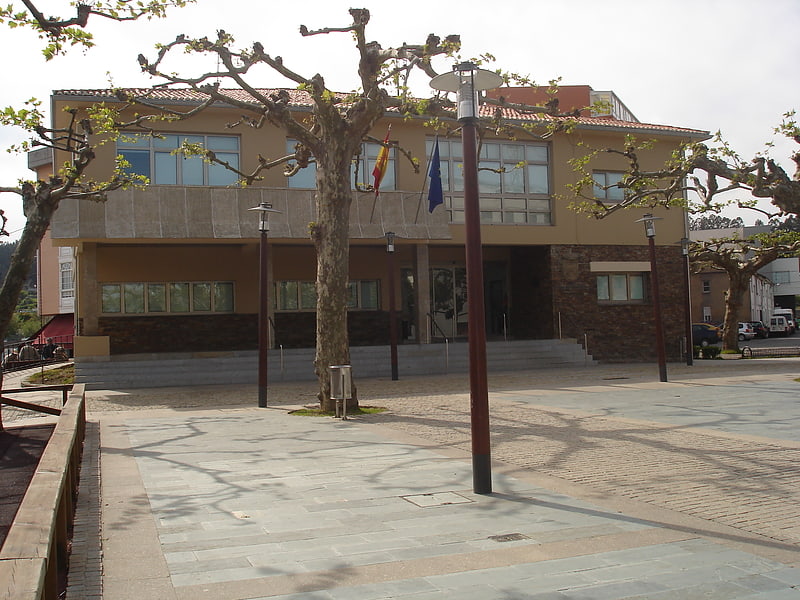
Municipality in Spain. Carral is a municipality of northwestern Spain in the province of A Coruña, in the autonomous community of Galicia. It is located 17 kilometers from the provincial capital of A Coruña. It has an area of 48 km², a population of 5453 and a population density of 113.6 people/km².
It borders with the municipalities of Ordes, Abegondo, Cambre, Cerceda and Culleredo.[7]
Colexiata Santa María do Campo
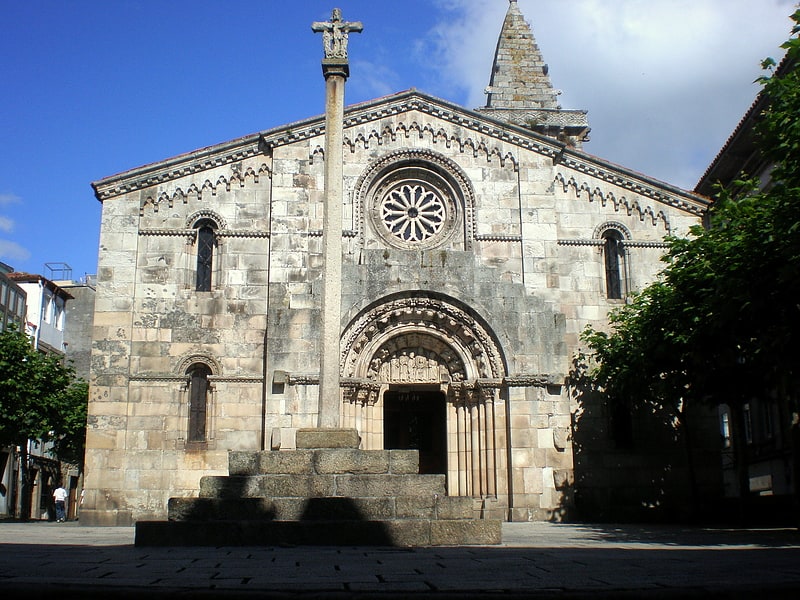
The collegiate church of Santa María del Campo is a Christian temple located in the old town of La Coruña. In 1931 it was declared an Asset of Cultural Interest.
Praia de Canide
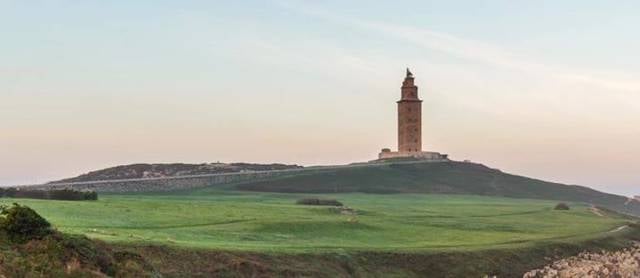
Beach
Address: Punta Canide, A Coruña
Domus
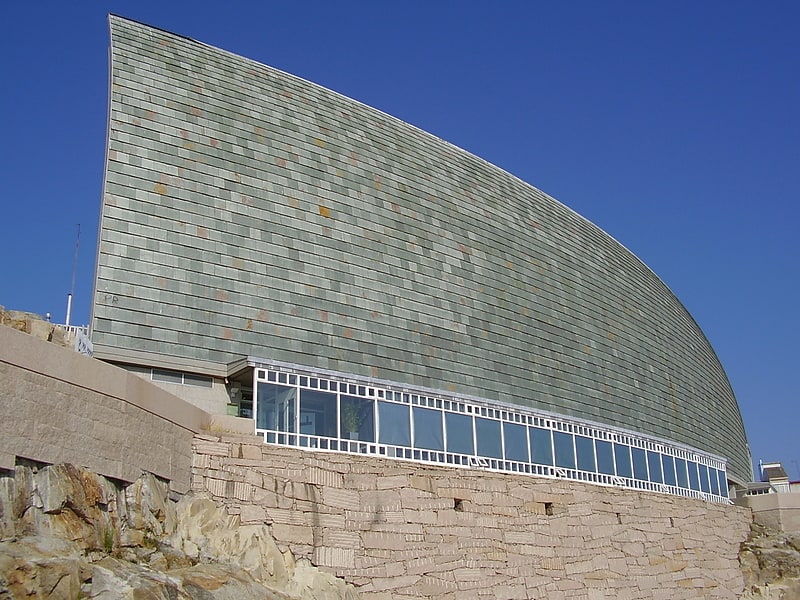
Museum in A Coruña, Spain. The Domus, formerly known in spanish as "Casa del Hombre", is a science museum located in A Coruña, in Galicia, Spain. It was inaugurated on April 7, 1995.[8]
Address: Rúa Ángel Rebollo, 91, 15002 A Coruña
Picasso House Museum
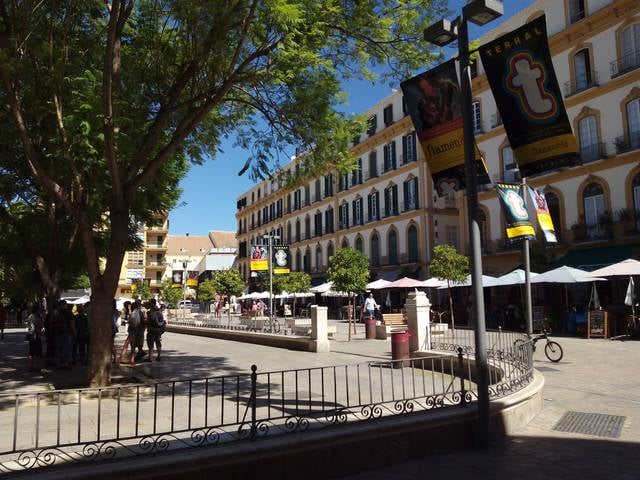
Pablo Ruiz Picasso was a Spanish painter, sculptor, printmaker, ceramicist and theatre designer who spent most of his adult life in France. Regarded as one of the most influential artists of the 20th century, he is known for co-founding the Cubist movement, the invention of constructed sculpture, the co-invention of collage, and for the wide variety of styles that he helped develop and explore. Among his most famous works are the proto-Cubist Les Demoiselles d'Avignon, and Guernica, a dramatic portrayal of the bombing of Guernica by German and Italian air forces during the Spanish Civil War.
Picasso demonstrated extraordinary artistic talent in his early years, painting in a naturalistic manner through his childhood and adolescence. During the first decade of the 20th century, his style changed as he experimented with different theories, techniques, and ideas. After 1906, the Fauvist work of the slightly older artist Henri Matisse motivated Picasso to explore more radical styles, beginning a fruitful rivalry between the two artists, who subsequently were often paired by critics as the leaders of modern art.
Picasso's work is often categorized into periods. While the names of many of his later periods are debated, the most commonly accepted periods in his work are the Blue Period (1901–1904), the Rose Period (1904–1906), the African-influenced Period (1907–1909), Analytic Cubism (1909–1912), and Synthetic Cubism (1912–1919), also referred to as the Crystal period. Much of Picasso's work of the late 1910s and early 1920s is in a neoclassical style, and his work in the mid-1920s often has characteristics of Surrealism. His later work often combines elements of his earlier styles.
Exceptionally prolific throughout the course of his long life, Picasso achieved universal renown and immense fortune for his revolutionary artistic accomplishments, and became one of the best-known figures in 20th-century art.[9]
Address: Rúa Payo Gómez, 14, 15004 A Coruña
Science Museum and Planetarium
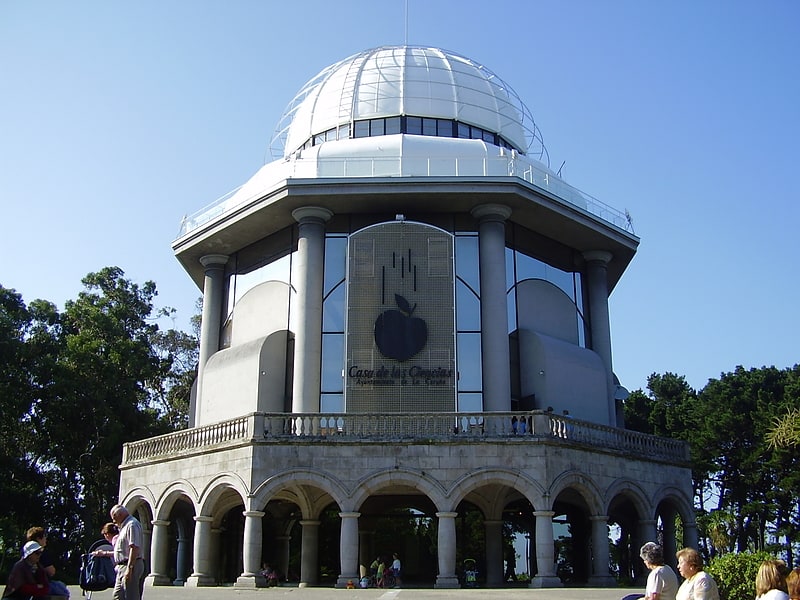
The Casa de las Ciencias is a cultural museum of scientific character located in the Parque de Santa Margarita in the city of La Coruña. It was created in 1983 by plenary agreement of the city council at the proposal of Mayor Francisco Vázquez Vázquez. The design of contents and its museological plan was written by Ramón Núñez Centella, who was its director until 2008. He was also the director of the National Museum of Science and Technology of Spain, MUNCYT Coruña, until his retirement. This museum was also inaugurated in 2011 in La Coruña, near the Riazor inlet, in the neighbourhood of Labañou.
This was followed by the Domus and Aquarium Finisterrae, scientific museums where it is forbidden "not to touch", in order to facilitate interactivity with visitors. The first president of the Association of Friends of the Casa de las Ciencias, Manuel Toharia, was inspired by them to create and provide content for the museums of the City of Sciences in Valencia. The Casa de las Ciencias in La Coruña had the second planetarium in Spain, where all imaginable nights of all times can be programmed. These museums are visited by a large number of schoolchildren from all over Spain every year.
Its objective is the dissemination, communication and scientific and technological education of citizens of all ages. It organizes exhibitions, conferences, awards, courses, screenings, editions, and collaborates with the media in scientific dissemination tasks. It also participates in the development and creation of meetings, forums and congresses. Its technical director is Marcos Pérez Maldonado.
The Casa de las Ciencias was the first of the three Museos Científicos Coruñeses (=mc2). Although it was created in 1983, the Casa de las Ciencias was inaugurated by the King and Queen of Spain on June 1, 1985 and became the first publicly owned interactive centre created in Spain. It is financed exclusively by the City Council of A Coruña.
Address: Parque de Santa Margarita, A Coruña
Port of A Coruña
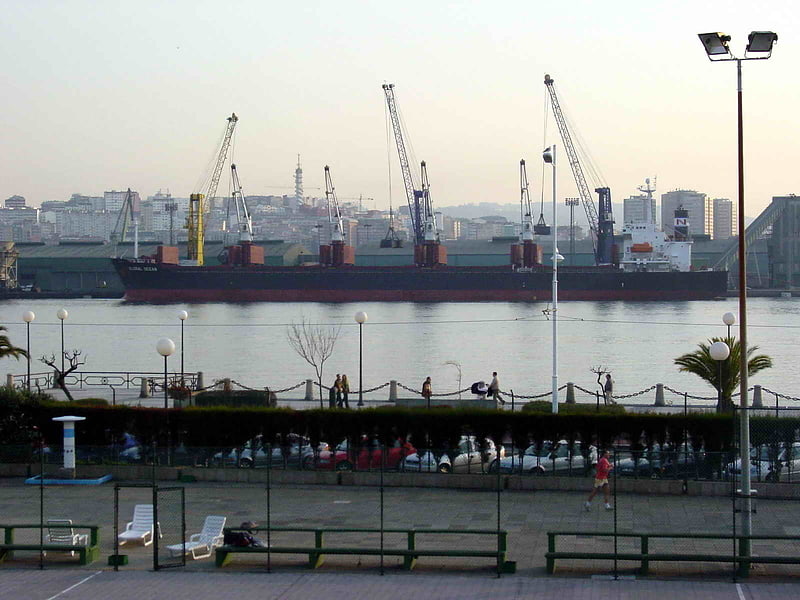
Also known as: Puerto de La Coruña
The Port of A Coruña is a port in A Coruña, Spain, on the Atlantic Ocean. The port complex occupies 1.15 km² of land and 9.94 km² of water along 7 km of waterfront.[10]
The Fine Arts Museum

The Museo de Bellas Artes de La Coruña is a fine arts museum located in the city of La Coruña that is housed in a modern building by Manuel Gallego Jorreto that recovers part of the former convent of the Capuchinas.